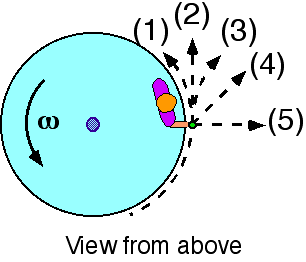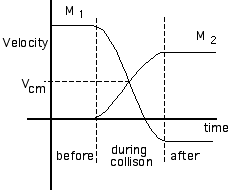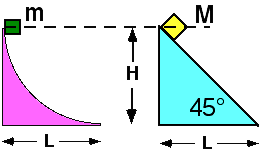Two masses, m and M, are released from rest at a height H above the
ground. Mass m slides down a curved surface while M slides down an
incline as shown. Both surfaces are frictionless and M > m.
Which of the following statements is true?
- The time it takes for m to reach the end of the surface is longer because the path it takes is longer.
- The time it takes is the same since both masses are released from the same height.
- The time it takes for M to reach the end of the incline is less because its horizontal acceleration is larger.
- The time it takes for m to reach the end of the surface is shorter because it has a larger acceleration initially and therefore builds speed more quickly.
- The time it takes is the same since both masses have the same displacement.
- The time it takes is the same because both masses have the same speed at the end.
- The times cannot be compared without knowing the masses of the blocks.
- More than one statement above is correct
- None of the above statements is correct.






Commentary:
Answer
(1) This problem helps interrelate concepts from mechanics and
thermodynamics. The work can be determined from the work done against
the gravitational force.